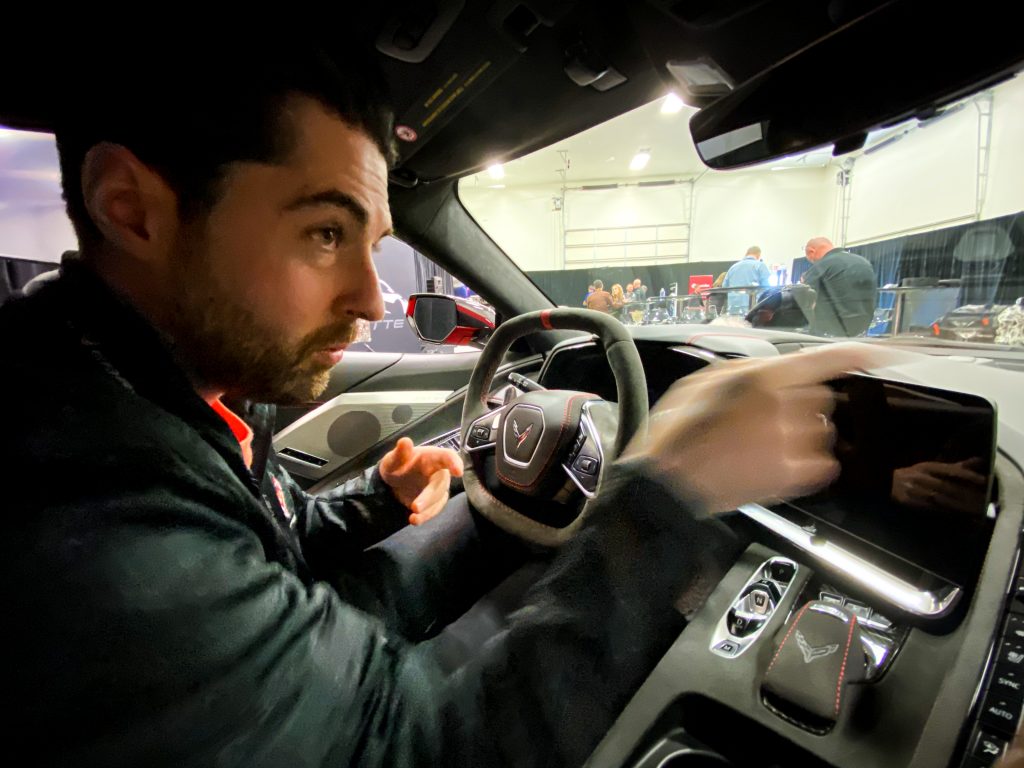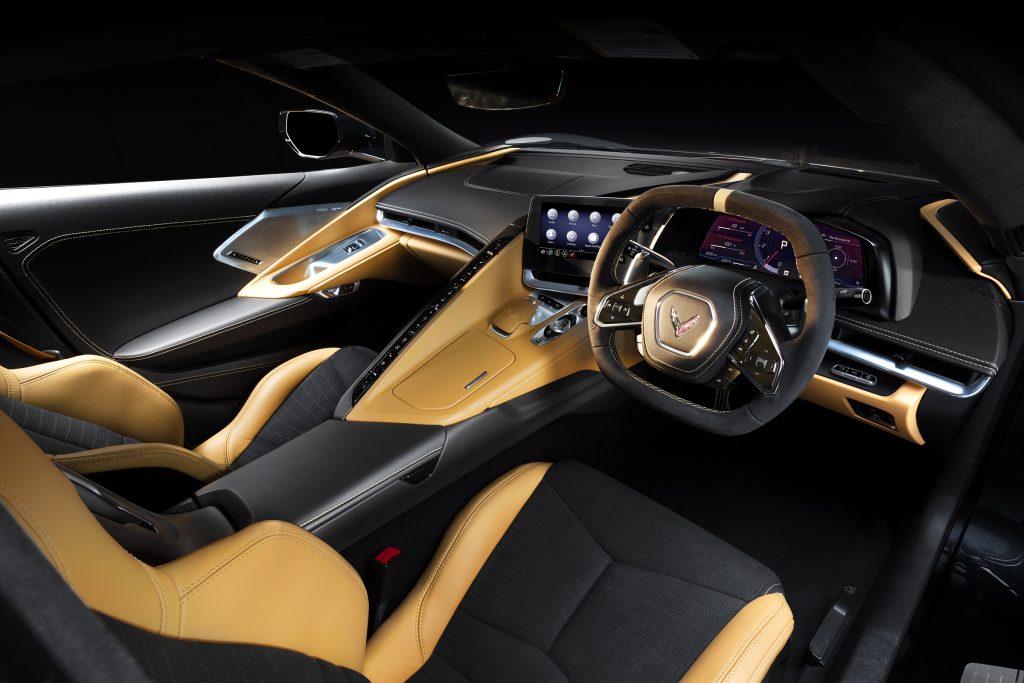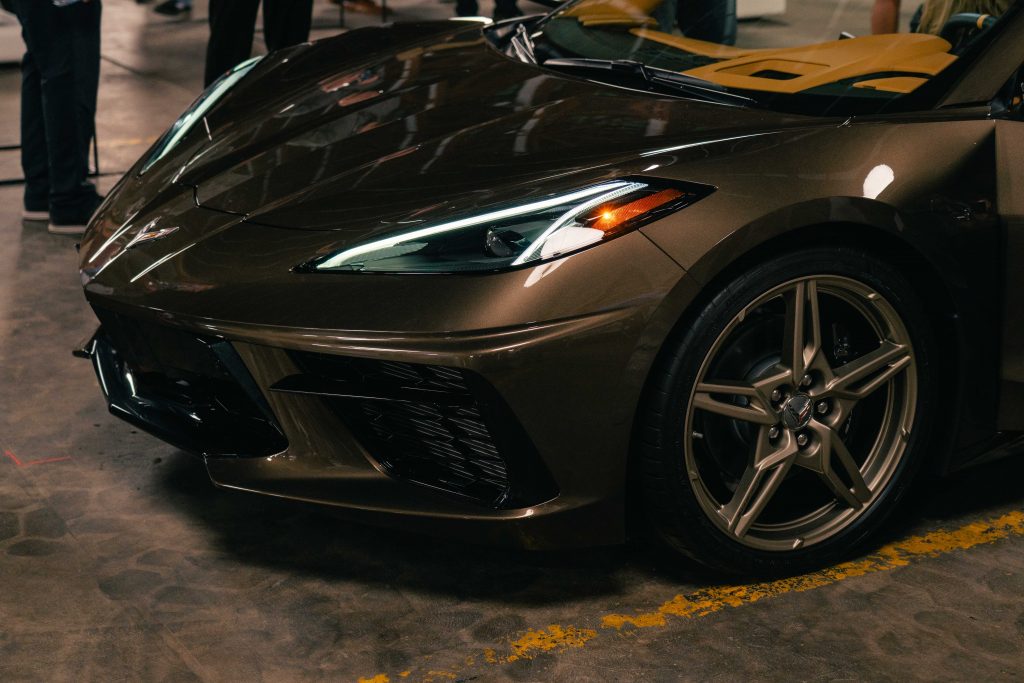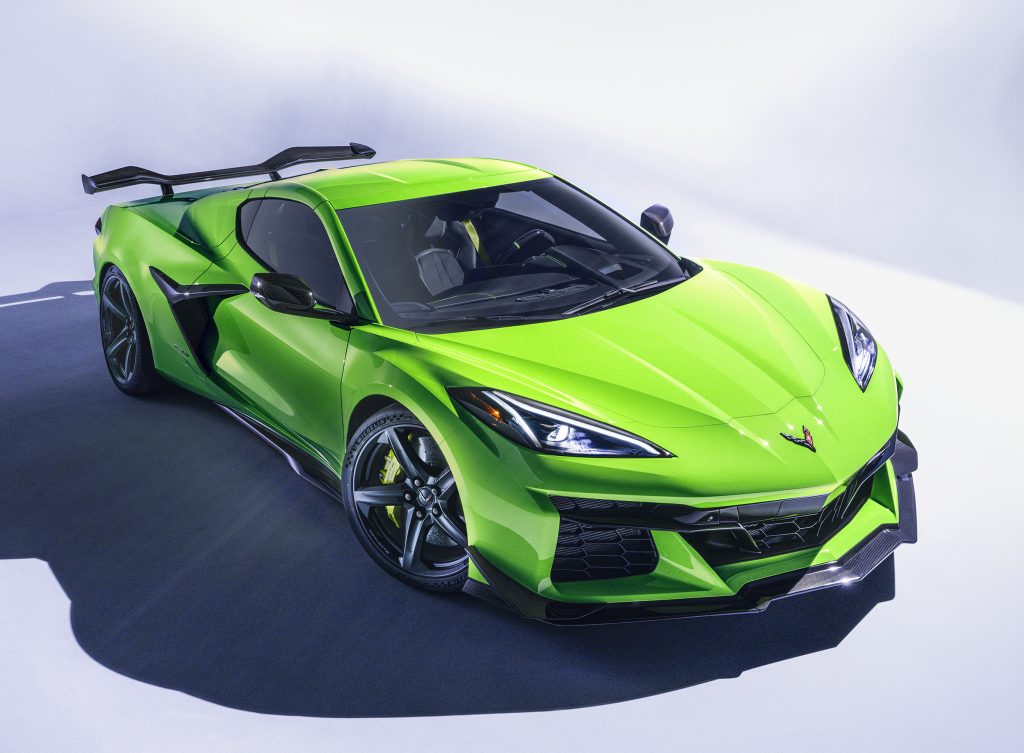Inside the 2020 Corvette with Brett Golliff, Global Design Manager
An expert’s insights on the interiors, colors and philosophy behind the new Stingray

“Nobody needs a Corvette for its function; they need it for its emotion,” Brett Golliff, Global Color and Trim Design Manager for Chevrolet at General Motors, explains to us. “They need it because it speaks for them; they need it because it brings something else out in them.” The all new, eighth-generation 2020 Corvette Stingray brings out quite bit—something we learned on the track outside of Las Vegas.

Everything about the new Corvette has been elevated—the design is more sophisticated, the details are refined and the performance and handling are remarkable. The removable top (standard, and available in body color, glass or carbon fiber) is a dream. This isn’t just an American sports car or muscle car any longer, it’s now a world-class one. If you’ve driven or been in a earlier model, you’ll still feel like you’re in a Corvette, but one that’s massively evolved. While the more expensive packages provide enhanced materials, options and performance, few will be disappointed with the car’s entry level offering, which starts at $58,900 in the USA.

Golliff took on his all-brand Chevrolet role—storytelling with color, in essence—in 2018. Prior to that, he led color for Chevy’s Corvette and Camaro. General Motors poached him for the position after his years in footwear design. Golliff was looking to leave his advanced product position at New Balance, where he was working on the tech side of running shoes. It was an extension of a childhood dream, and he thought Nike or adidas would be a next step. Both offered him a position—and still he went to GM, where he’s been ever since. Golliff shares his expertise with us, highlighting developments in the most recent Corvette’s interiors and colors, and the philosophy behind it all.

Let’s start with the obvious: the exterior. This looks different than previous generations of Corvette. Why is that?
The obvious answer to that is going to mid-engine. I think what mid-engine really provided us was a new stance and new architecture. It changed the proportion of it pretty dramatically. I do believe there are still cues that are reminiscent of what Corvette is—predominantly through the rear, which I always call the hips. That’s kind of the way I would describe it. You have these aggressive arches that come through. I think that’s very much Corvette. And the way that it’s set up, as well, with this ever-flowing movement, going forward. It looks like it’s going fast when it’s sitting still.
It looks like it’s going fast when it’s sitting still
I think some people heritage-wise will say this doesn’t look like a Corvette, but I think it does when you establish it off of what we have been doing from concept cars over the past 10 to 15 years. I think the one thing that it really, really provided us with though was a new design philosophy: this car, truly no matter what view you take—interior, exterior and motor—was approached at the exact same time. And that philosophy really brought us together as a studio. We all had to work together with each other and know that whatever change is happening over there is affecting us in here, too. We had to make sure that we’re all going toward a common goal.
When you think of Corvette in the past, there were elements of it that were always done really, really well but there were a lot of elements that could get better. Interior was always one of those. It kind of had the personality of like, “Hey I’ve got a phenomenal drive and motor experience but maybe not this overall, for lack of better term ‘luxury experience.'” We really wanted to make sure that we brought this up to the level that it deserved to be.

Are there opportunities that a car like this presents that not all the other products in the portfolio do?
There’s obviously an energy and a mystique that’s around the name Corvette that gets people excited, no matter what. But I think the way I look at this vehicle is that it offers a very, very true indication of what it needs to accomplish. Not every vehicle always has this list of goals that it has to get through. If you have something for the masses, you do not need to make sure that it can go to zero to 60 in 2.9 seconds. It doesn’t necessarily have to go and take five Gs on a turn. For us, there’s this checklist that you make sure that you have to go and achieve and I think that as a functional standpoint gives everybody something to attain—something that they have to hit.

How do you achieve something like this?
Depending on how you look at this project, you could argue that it’s 15 years in the making or you can argue that it’s 65 years in the making. Whatever it may be, bringing that together is a huge piece. We all are after one obtainable goal, and we’re all going to work toward it: a truly functional product. There can be a lot of passion in some of conversations at times, but all of us really, really work well together to make it happen. And I think that that’s a big element of what you see here.

What about some of the materials that you’re using on the Corvette. Anything new, different or exciting to work with?
By the time you get to the top level of interior, the entire thing is all Napa leather. That comes standard with a suede headliner, and then you’ll have the option of suede for the steering wheel and a seating surface. These pieces are tied to what package you choose. A few of the things that I think we really elevated are in the simple details. Our stitching went from a 135 thickness, which is like an industry standard, to 210. In previous years [we had] accent stitching, but it was like that stitching was truly there as a function, whereas now it’s really calling out the craft and the quality. Somebody’s actually going in and stitching that and it becomes a part of the visual. When you look at these cockpit pieces you know that it’s kind of calling out the line that follows you through the idea of “this was to keep you moving forward.”

What value does this bring?
I don’t think it’s any secret that traditionally people feel like American sports cars don’t pay attention to the interior. I would argue that the interior—in more ways than one—is becoming some of the most important parts to a lot of vehicles. It doesn’t matter where you’re at in the world and what it is, but I think why it’s important to the core of that is it accentuates the true driving experience. We really looked at the color of each material as a second portion of what the car speaks to you. You know I’ve referenced it a few times but this idea of making it look like it’s moving as it’s sitting still. But, then also continuing like this idea of a crown jewel that’s behind you. That is the motor right, I mean. We really want to tell you that if you have a mid-engine car, it’s living up to everything that’s expected.

From Corvette?
If I have to speak truly for just Corvette, what these decisions do for us is that it elevates the brand, probably far past what people are expecting of us. And I also think most importantly is that it’s a bit of a form follows function. I’ve kind of always looked at the motor as like the athlete for the car, and then everything else just surrounds that and helps it like propel itself forward. So what this does, going forward, is it helps us to maintain this material strategy and maintain what’s most important for that athlete.

How is this assembled?
We have what we call a tier structure, like most other OEMs, where it will come in from the plants and then be kind of put together—but most of your interior parts, especially what you were just pointing out, the IP, and everything, it’s coming from one supplier. It’s not like we have that one piece coming from over there and this piece coming from over there. It’s all coming together in Bowling Green, Kentucky.

Can you go into more detail on how the mid-engine change influenced design?
What we wanted to hone in on was taking advantage of that new level of visibility that was gained from this—so we kept making sure that everything was being pushed down and getting thinner. These are the thinnest vents in the industry. You know, in design, you go thick to thin, right. Like when you’re drawing something, what gives good motion is when you kind of have like a thick pressure point and then it thins out. You show that continuous movement. We wanted to highlight how that was working. When we saw that it was like this, we knew we needed to highlight with color and with other material changes.

There are new colors and new interior colors—all kinds of new options with this generation.
People that are getting into this price range, they want their own options. They want to make it theirs and they want to do it in a tasteful way. I think what’s really exciting about the seat belt style, and then going into the interior side, is that we offered packages that are curated, but also feel very bespoke if you do them properly. From an engineering standpoint, we, if you kind of followed 7, we had to ramp up, so to speak, to get to that amount of options. Now we’re starting out with that amount of options and really growing further.

It was really, really important to me that we did what I call the “gray with an opinion.” Everyone has gray. We needed to do better. With the natural tan, we did it two ways where it’s predominantly a black interior with a little bit of natural material. And then we did one where literally everything you get in the car is natural, and that color was like a baby of mine. I’m not saying it’s revolutionary to the industry because the color is out there, so to speak, but I mean it’s our own version.
I think a lot of times, Corvette has always had the pieces, but the pieces weren’t always together. So it was making this story to be a full, cohesive package and really making sure that every detail has been thought about and connected and touched.
Hero image courtesy of Chevrolet












